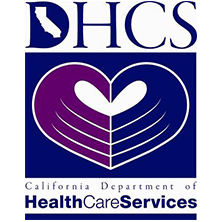Seems like something that should have a simple, straightforward solution when framed that way, no?
Something very clean and very linear even.
But how to quit drugs can be looked at as both a guide and a question; how to quit drugs?
Life isn’t always clean and linear; addiction is proof of that. Addiction itself is perhaps the polar opposite of clean and linear. So, the how-to is necessarily unique for each individual and while there is certainly a basic framework, the journey will be different for everyone.
What Are the Signs of Addiction?
The signs and symptoms of addiction will vary depending on the person and substance. A substance use disorder revolving around opioids will manifest somewhat differently than an addiction to benzodiazepines or cocaine.
That said, there are a set of common signs that underpin all addictions because at the end of the day addiction is a brain disorder. To put it differently, the definition according to the National Institute on Drug Abuse (NIDA) is, “a chronic, relapsing disorder characterized by compulsive drug seeking and use despite adverse consequences. It is considered a brain disorder, because it involves functional changes to brain circuits involved in reward, stress, and self-control. Those changes may last a long time after a person has stopped taking drugs.”
What that looks like is this:
- Strong cravings
- Using larger amounts and/or for longer periods
- Unable to successfully cut back despite trying
- Spending a considerable amount of time getting, using, and recovering from drugs
- Experiencing withdrawal symptoms when not using
- No longer fulfilling work, school, and family obligations or responsibilities
- Friendships and romantic relationships are suffering
- Building a tolerance that requires ever-increasing doses to achieve the same high
- Continuing to use despite the obvious mental and physical decline
- Giving up activities, events, gatherings, etc. to use
- Finding yourself in more dangerous situations, i.e., driving while under the influence, sharing needles, etc.
No matter the substance, these aforementioned signs will start to become more and more present and clear. Of course, the drugs will have other visible effects like declining personal hygiene, shifts in mood and personality, changes in sleep patterns, and more and those are what tend to vary depending on the substance.
How To Quit Drugs Successfully
The first step is admitting and acknowledging an addiction exists. You can’t fix what you can’t name.
After that, it’s onto one of the largest hurdles; detox.
A substance use disorder is both mental and physical. Detox deals with your body’s dependency on the drugs and to be honest, it’s not a pleasant experience. There’s withdrawal and the discomfort that comes with it, which is why it’s recommended to detox under the care, supervision, and guidance of specialists – like our team At Safe Harbor.
After the body is cleared of toxins, it’s time to focus on the mental side of things.
Depending on the severity of your addiction, this will either happen in inpatient or outpatient care. Inpatient treatment is characterized by moving into a rehab center and focusing solely on recovery for the duration of your stay whereas outpatient care is scheduled around your life and can be integrated into your routine.
What your program looks like will again depend on your unique situation. At Safe Harbor we specialize in a well-rounded group of therapies:
- Trauma therapy
- Experiential therapy
- Cognitive-behavioral therapy
- Dialectical behavioral therapy
- Medication-assisted treatment
- Outdoor adventure therapy
- Group and individual therapy
- Psychiatry
Once you complete your personalized recovery program, the final step is to develop a plan of action for what to do after, which is where the aptly named aftercare planning comes in. This is where you’ll figure out what the future will look like with respect to recovery, whether it’s family support, support groups, continuing therapy, entering a sober living home, and more. It’s something we can help you with.
To learn more about everything else we do, don’t hesitate to reach out.




